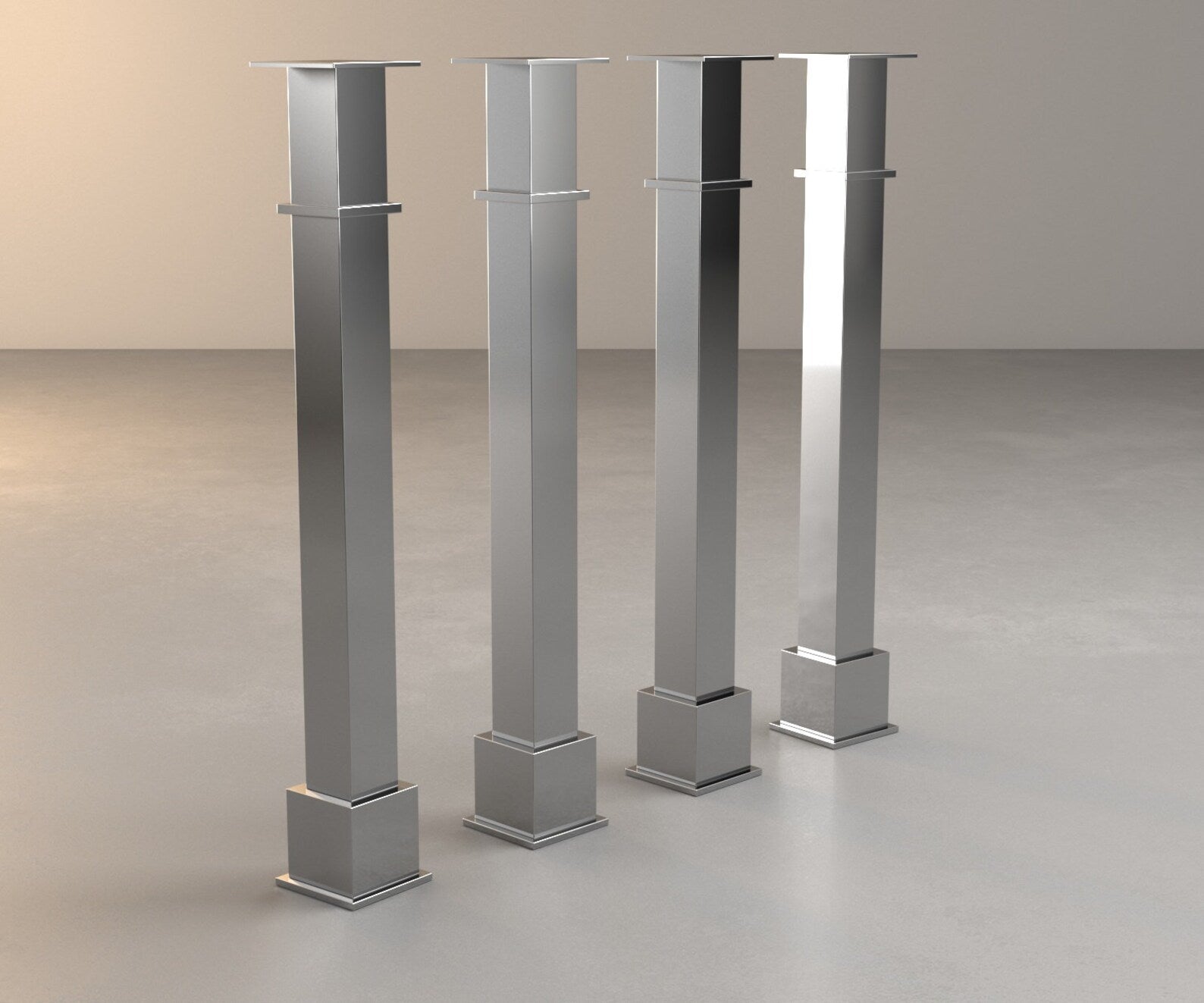Crucial Variables to Take Into Consideration When Choosing Legs For Kitchen Area Island
Choosing the appropriate legs for a kitchen island entails a mindful evaluation of several factors that can significantly affect both performance and aesthetic allure. Among these, the choice of material plays an essential function in ensuring durability, while the layout should complement the existing decor. Additionally, factors to consider such as elevation and weight support are necessary for security and convenience. As we discover these aspects, it comes to be clear that each choice can have far-reaching effects for the total cooking area experience. What nuances should be taken into consideration in each of these classifications to achieve the suitable balance?
Material Options
When picking legs for a kitchen island, comprehending the numerous product options is necessary for achieving both aesthetic charm and architectural integrity (Legs For Kitchen Island). The choice of material dramatically affects not only the sturdiness of the island yet also its overall style and capability
Steel legs, usually made from stainless steel or functioned iron, add a modern-day and commercial feel while guaranteeing sturdiness and stability. These materials are resistant to wear and can sustain significant weight, making them excellent for bigger islands.
One more choice is engineered materials, like MDF or plywood, which can be extra cost-efficient while still supplying an array of surfaces. They may not provide the very same degree of stability as strong timber or metal. Legs For Kitchen Island. Products such as acrylic or glass can produce a modern appearance, though they may call for extra support to make certain stability.
Ultimately, the option of material for kitchen area island legs ought to straighten with the preferred functionality and the total theme of the cooking area.
Style and Layout

When taking into consideration design, the form and coating of the legs are essential. Conical legs can give a feeling of agility and style, while thicker, extra robust legs can share toughness and security. In addition, the coating-- be it repainted, discolored, or natural-- ought to match the cabinetry and countertop materials to develop a unified appearance.
Additionally, the style of the legs can likewise reflect personal preference. Personalized or attractive legs, such as those featuring elaborate carvings or one-of-a-kind geometric forms, can act as prime focus, adding personality and character to the kitchen area. Ultimately, the right selection will certainly not only enhance capability however likewise elevate the visual charm, making the kitchen island a standout attribute of the home.
Height Considerations
Selecting the proper elevation for kitchen island legs is vital, as it directly affects both capability and comfort. The typical height for a kitchen area island typically ranges from internet 36 to 42 inches, straightening with common counter top elevations.

It is also essential to make up individuals' preferences and heights. Tailoring the height can guarantee a look here comfy experience for all relative, making the cooking area island a more enjoyable and useful area.
Weight Support
Making certain sufficient weight assistance for kitchen area island legs is vital for both safety and security and functionality. The cooking area island typically offers several objectives, including cooking, dining, and added storage, demanding a robust assistance structure. When choosing legs, it is crucial to think about the total weight capability called for based on the island's meant use and the products that will certainly be put on it.
The option of product for the legs plays a significant duty in their weight-bearing abilities. Strong timber, steel, and heavy-duty compounds typically provide exceptional toughness contrasted to lighter products. Furthermore, the design of the legs-- whether they are right, tapered, or have a pedestal kind-- can influence their capacity to distribute weight efficiently throughout the framework.
Always speak with the producer's specs concerning load limits to ensure that the legs can sustain the intended weight without endangering safety and security. In recap, choosing kitchen area island legs with sufficient weight support is essential for creating a useful and risk-free culinary room.
Installment and Upkeep
Appropriate installation and maintenance of cooking area island legs are important for making sure durability and stability. To start, it is vital to comply with the manufacturer's standards throughout installation. This often site here entails protecting the legs to the island base making use of proper fasteners, ensuring that the legs are degree and straightened. Using a degree device can help protect against tottering and enhance the total aesthetic allure of the kitchen area island.
Once mounted, regular upkeep is necessary to preserve the stability and look of the legs - Legs For Kitchen Island. For wooden legs, routine cleaning with a moist cloth and application of appropriate timber polish can stop moisture damage and keep their finish. Steel legs might need a mild cleansing service to get rid of grease and gunk, adhered to by a dry towel to avoid corrosion development
Additionally, examine the legs regularly for indications of wear or damages, such as splits or loose joints. Tightening screws or bolts as required can additionally extend the lifespan of the legs. By sticking to these setup and upkeep practices, house owners can guarantee that their kitchen island stays tough and aesthetically appealing for several years to find.
Conclusion

Aesthetic coherence is vital in picking the design and design of legs for a kitchen island, as these aspects considerably affect the total setting of the space. Tapered legs can offer a sense of lightness and sophistication, while thicker, a lot more durable legs can share toughness and security.Picking the appropriate height for kitchen island legs is essential, as it directly impacts both performance and comfort. In summary, selecting kitchen island legs with sufficient weight support is important for producing a functional and safe culinary room.
In verdict, picking legs for a cooking area island demands cautious consideration of various elements, including product alternatives, design, height, weight support, and installment.